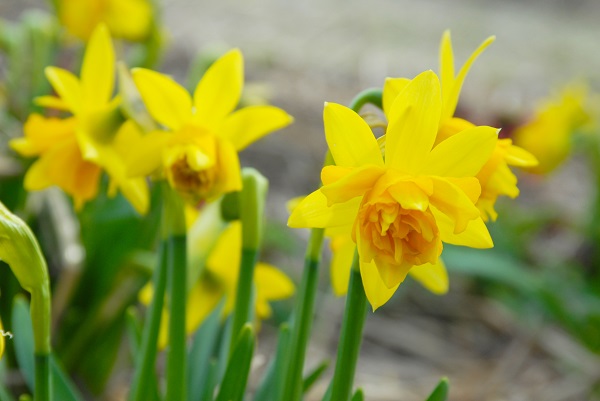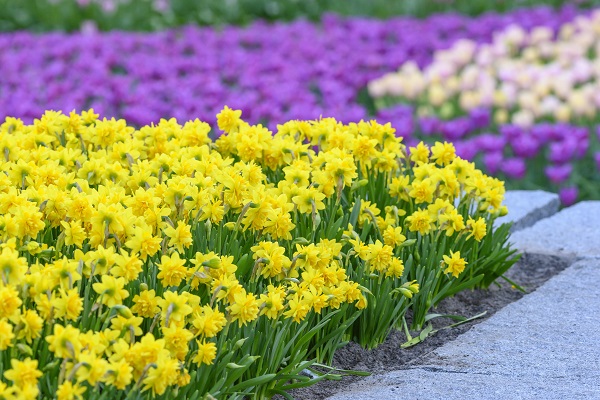

This lovely double daffodil is the double form of the adorable Narcissus 'Tete-a-Tete'. The Narcissus 'Tete Boucle' is an extremely reliable bloomer and repeater. This double yellow and orange Narcissus has a tight-knit inner center while sporting wide-open outer petals.

Blooms: The Narcissus 'Tete Boucle' will add a great bit of fun and enjoyment to your late March/early April garden. At just 6-8" tall this daffodil is great at the front of your garden bed, along a sidewalk, or as a filler in garden pot. There are multiple bright yellow petals with touches of orange mixed in. The center petals hold together for a long itm as the outer most petals begin to open wide providing a unique bloom.

Plant: Plant the bulb like most daffodils in 6+ hours of winter sun, well-drained soil, avoid standing water, and avoiding too much competition. Plant the bulbs about 2-3 times the size of the bulb (so if the bulb is 1 inch long, plant it 2-3 inches deep). If you are farther north and get very cold during the winter, you may want to plant it about 4-6 inches deep. Space the holes about 3-6 inches apart, and for a more natural looking display, consider planting 2-3 bulbs in each hole.

Landscaping Tip: Narcissus bloom at different times so as one daffodil is ending its bloom time another is just beginning. We like to say that "there is a bulb that blooms every week of the year in warmer climates." Your garden can have consistent flowers that you can enjoy inside or outside for months and carry you all the way from February through April.
Fragrance: This Narcissus has a light, sweet fragrance. This fragrance can add an extra dimension of beauty to the flower and make it more attractive to pollinators like bees and butterflies.
This lovely double daffodil is the double form of the adorable Narcissus 'Tete-a-Tete'. The Narcissus 'Tete Boucle' is an extremely reliable bloomer and repeater. This double yellow and orange Narcissus has a tight-knit inner center while sporting wide-open outer petals.

Blooms: The Narcissus 'Tete Boucle' will add a great bit of fun and enjoyment to your late March/early April garden. At just 6-8" tall this daffodil is great at the front of your garden bed, along a sidewalk, or as a filler in garden pot. There are multiple bright yellow petals with touches of orange mixed in. The center petals hold together for a long itm as the outer most petals begin to open wide providing a unique bloom.

Plant: Plant the bulb like most daffodils in 6+ hours of winter sun, well-drained soil, avoid standing water, and avoiding too much competition. Plant the bulbs about 2-3 times the size of the bulb (so if the bulb is 1 inch long, plant it 2-3 inches deep). If you are farther north and get very cold during the winter, you may want to plant it about 4-6 inches deep. Space the holes about 3-6 inches apart, and for a more natural looking display, consider planting 2-3 bulbs in each hole.

Landscaping Tip: Narcissus bloom at different times so as one daffodil is ending its bloom time another is just beginning. We like to say that "there is a bulb that blooms every week of the year in warmer climates." Your garden can have consistent flowers that you can enjoy inside or outside for months and carry you all the way from February through April.
Fragrance: This Narcissus has a light, sweet fragrance. This fragrance can add an extra dimension of beauty to the flower and make it more attractive to pollinators like bees and butterflies.